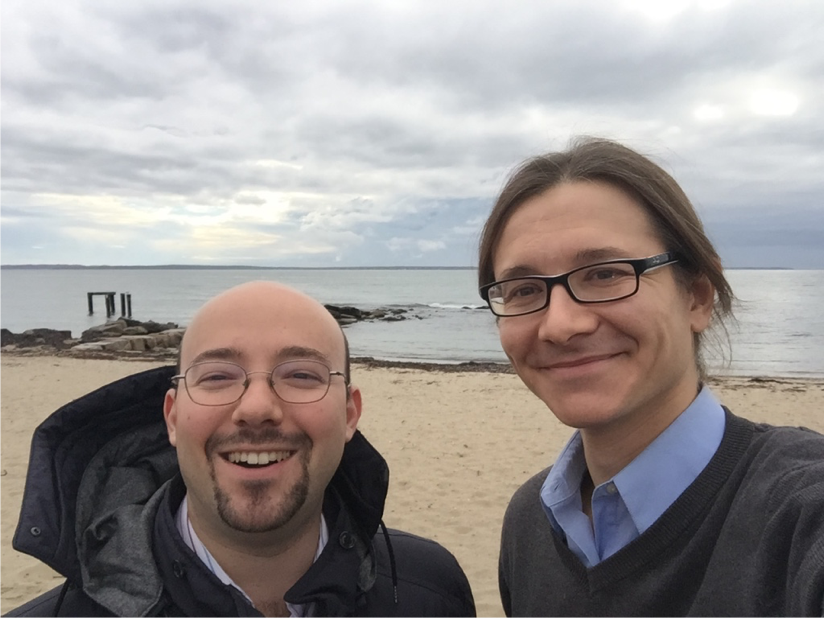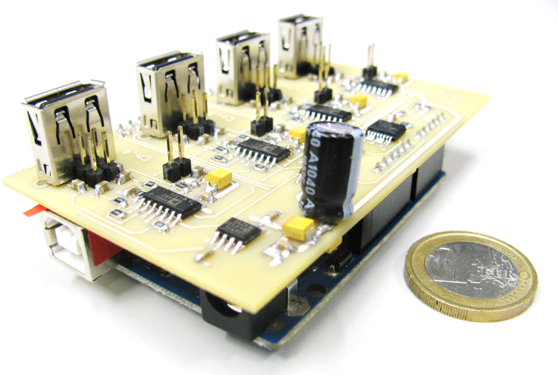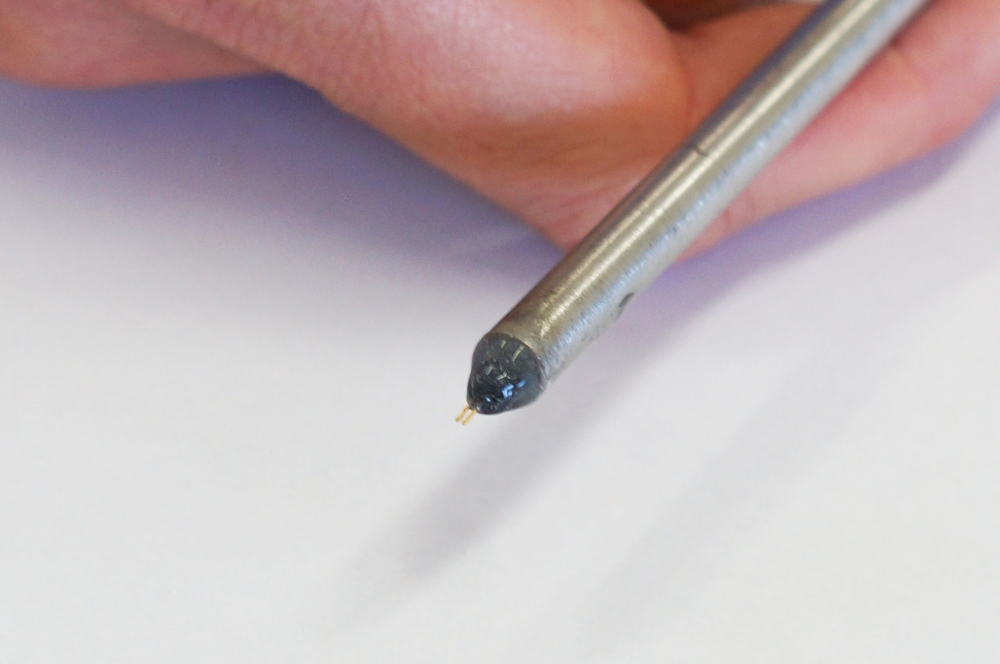Where There’s a Will

UC Santa Barbara mechanical engineer Paolo Luzzatto-Fegiz was frustrated. Once again, the delicate tip of the instrument he was using to measure water density — a conductivity probe — had broken, rendering the setup useless and his work in temporary limbo.
Consisting of four small platinum electrodes housed in glass, the probe tip was thin and highly sensitive, capable of making measurements in tiny volumes of water. But what good was such a precise instrument if it kept breaking?
“They work very well,” said Luzzatto-Fegiz, an expert in fluid dynamics. “But the tricky thing is that they are expensive in addition to being fragile, so it ends up being quite expensive to do complicated experiments in the lab.” The tip’s fragility also limits the kind of experiments that can be done in the field, he added, lest it bang up against something, or stray debris come in contact with the millimeter-thick platinum-and-glass end.
“It also limits the kind of teaching that could be done with it, for example in oceanography,” Luzzatto-Fegiz said. “It would be great to send out a bunch of undergrads in your labs to use these things but you can’t reasonably afford to do that.”
Slightly annoyed and rather unwilling to continue spending the thousand or so dollars it would take to get another conductivity probe setup — not to mention the lost time — only to have it break again, Luzzatto-Fegiz engineered his own solution. The rise in maker culture — particularly with DIY electronics — offered some hope, and resulted in a device that would make MacGyver proud.
“I’m not an expert in electronics,” Luzzatto-Fegiz said. “I know about fluids, so I needed to connect with someone who knew about the electronics.”
Enter Marco Carminati, a microelectronics and sensors expert from the Politecnico di Milano, who also happened to be Luzzatto-Fegiz’s childhood best friend. During a trip to the UCSB professor’s home city of Milan, and using off-the-shelf products, the two engineers designed and built a conductivity probe that not only costs a fraction of the conventional one, but also achieved close to the same sensitivity while being more versatile and robust enough to withstand the occasional knock. Their work is highlighted in a paper titled “Affordable and high-resolution multichannel water conductivity sensor,” which appears in the journal Sensors & Actuators B: Chemical.
The main design challenge — replicating the fancy probe tip with its closely spaced electrodes — was solved by cannibalizing gear many of us already have sitting in our junk drawers: a micro USB connector plug.
“What you do is you essentially peel off the outer metallic shield and expose these gold-plated electrodes and they’re perfect,” said Luzzatto-Fegiz, crediting Carminati for the idea. Named “Conduino,” (since it measures conductivity, and is Arduino-based) the device is modular and customizable and also can be USB-powered, making it extremely portable. It also incorporates several sensors operating in parallel, as opposed to the single sensor of the commercially available device.
“You can make the whole thing for a couple hundred dollars in your garage, in your free time,” Luzzatto-Fegiz said. The design, which includes a stainless steel shaft and a Matlab-controlled Arduino electronic board, is open source — so anyone can make one.
“Although the Arduino microcontroller is sometimes considered a toy in the scientific community, it is a fantastic tool for rapid prototyping a digital interface controlling the high-resolution analog circuit tailored on the USB electrodes,” Carminati said. “Its combination with Matlab perfectly suits the need for tweaks and integration with the precious code controlling complex experiments, common to researchers in the fluid dynamics and oceanographic fields.”
While some experiments and operations require conventional instruments for the finest, highest-resolution measurements, the Conduino achieves the same level of performance as the commercially available devices for most applications.
“For most areas of application you don’t need to get that fine. This is plenty small enough for any application I’ve come across, personally,” Luzzatto-Fegiz said.
“The Conduino, when combined in a package with small temperature and pressure sensors, would allow the measurement of salinity and water density in the ocean from a variety of autonomous platforms,” said UCSB oceanographer Libe Washburn. “For example, aerial drones could fly over the ocean and then lower the sensor package to obtain vertical profiles of ocean water properties. The package could also be mounted on autonomous ocean vehicles for in-water sampling of water properties. Colleagues and I are working on these types of aerial drones and in-water vehicles for coastal oceanographic research, so we are very interested in this new sensor.”
Additionally, Scripps Institution of Oceanography at UC San Diego plans to adopt the Conduino for a course on ocean instrumentation.





